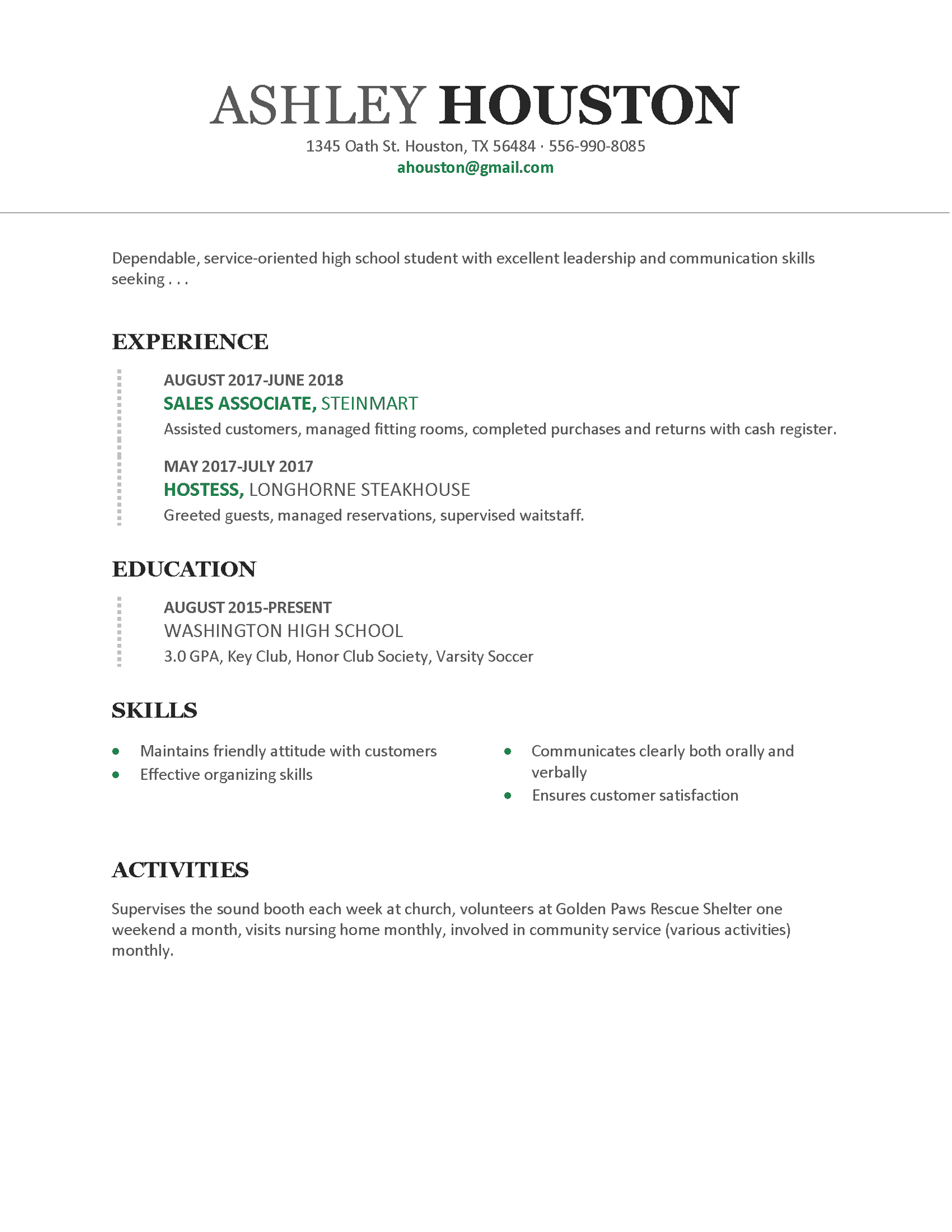Resumes
Introduction to Technical Writing
As a senior in high school, you face many exciting opportunities. In the coming weeks and months, you may look for a new job, apply for an internship, and submit college applications. Many of these new opportunities require you to do more technical writing than you have done in other English courses. Instead of doing research or analyzing the theme of a literary work, you need to create a resume, write a personal essay, or craft a cover letter for an application. We'll spend a few days developing these skills so that you can look back at these lessons throughout the year whenever you face a new opportunity!

Employment Forms
When actively pursuing a part-time or full-time job, you will need to fill out various forms and create documents for prospective employers. Keep in mind that employers will read through these forms and decide, based on what you have submitted, if they will consider you for employment.
One of the standard documents created for employment is the resume.
Resume: A brief written account of personal, educational, and professional qualifications and experience, as that prepared by an applicant for a job.
"Resume," Dictionary.com(opens in a new tab)

Let's look at an example of a resume. Take note of what the following resume reveals about Sam's educational/professional qualifications and experience.


What did you think of Sam's resume? What information concerning his educational background does Sam include?
The name and location of his high school
His GPA (since it is 3.0 or higher)
A list of school-sponsored activities and groups
Be sure to include any groups/activities associated with homeschooling, such as Classical Conversations.
What about Sam's professional qualifications? This part can be tricky if you don't have much professional experience, so think carefully about your strengths and showcase them on your resume.
Sam showcases four areas of strength in his resume:
Communication
Teamwork
Teaching
Technical proficiency
Words Matter
Look again at the details Sam gives concerning his areas of strength and his experience highlights. What do you notice about his word choice and the parts of speech he uses?
Strong Verbs
–
Sam uses actions verbs such as "collaborating," "tutoring," "executes," and "managed" in his descriptions.
Vivid Adjectives and Adverbs
–
Sam also uses strong adjectives in the following phrases: "timely manner," "creating regular, relevant posts," "orderly fashion," "efficiently," and "precisely."
These adjectives and adverbs give us a clear image of Sam's abilities.
Concise Phrases
–
Sam does not write complete sentences but descriptive yet concise phrases to communicate as clearly and concisely as possible.
Example: "Mastery of all major social media sites"
Example: "Facilitated small group math workshops"
Formal Language
–
The formal language indicates that Sam is serious about getting this job.
Example: "Managed Tutoring Services' social media accounts, creating regular, relevant posts to boost online presence."
Example: "Ensures excellent customer service during phone and in-person interactions."
Based on Sam's resume, for what kind of job is he applying?
Directly under the heading "Qualifications," Sam writes the following: "Experienced high school student ideal for an undergraduate tutor role requiring personable communications skills, love of teaching and collaborating, an exemplary work ethic, and computer knowledge."

Remember your audience.
We can tell that Sam is applying for an undergraduate tutor position, probably at his new college. In that kind of position, communication is quite significant, correct? And teaching, obviously, since Sam is applying to be a tutor. Teamwork and technical proficiency are also probably involved in this position, but less so, which is why they are listed last.
Sam effectively provides details that will help his prospective employer see that he is capable of effectively filling the customer service position!
Experience
Sam is also able to include work and volunteer experience on his resume. He includes volunteering on his resume because he has held only one other job and because his volunteering experience is extremely relevant to the position to which he is applying.
What information does Sam include concerning his experience?
Businesses for which he has worked/volunteered
Positions
Dates during which he worked
Descriptions of his duties
Sam includes detailed descriptions of his work and volunteer duties, using clear, vivid language in his descriptions.
Job Posting:
Cashiers assist customers with swift, friendly service, accurately processing in-store and online purchases and returns. Additionally, cashiers provide customers with information concerning weekly specials and monthly sales. Previous retail experience is preferred but not required.
If you read this job position posting and decided to apply to be a cashier, what skills do you think your potential employer would look for in your resume?
List at least five skills.
Think about your experience and your skills. Try to pinpoint how your skills/experience correspond to the skills desired for each job posting.
Look at the following resume. Based on what Ashley includes as her skills and activities, for what kind of job might she be applying?

Because Ashley focuses on leadership, customer service, and communication in her "Skills" section, perhaps she is applying for a leadership role in customer service—maybe a supervisor or an assistant manager position.
The activities she lists at the bottom of her resume highlight her interest in serving others, which is a significant factor in customer service.

Remember that not all resumes look alike. You may want to include a photo of yourself or use a different format from the two examples in this lesson. Just be sure that your font is clear and professional-looking, your layout looks organized, and your skills and qualifications are detailed and formally worded for your potential employer.
Don't forget to proofread, proofread, proofread! Always have someone else look over your resume when you're finished. The better your resume is, the more likely you will be to get the job!

Your Turn: Create Your Own Resume
Now that you have read a few examples, you can begin working on your own resume.
First, determine your audience. For what kind of job would you like to apply? Consider your skills, qualifications, and experience. How might those correspond to the duties of the job? Be sure to include accurate information so that you can actually use this resume to apply for a particular job.
Your resume should include five sections:
Contact info. This section includes your name, address, phone number, and email address.
Summary. This section explains why you are qualified for the position.
Experience/activities. This section includes work and volunteer experiences, duties, and accomplishments.
Education. This section includes the name(s) of the school(s) you have attended, the location(s) of the school(s), and your involvement in school activities/groups.
Skills/qualifications. List any skills or qualifications relevant to the job position you are applying for. Be detailed in this section.